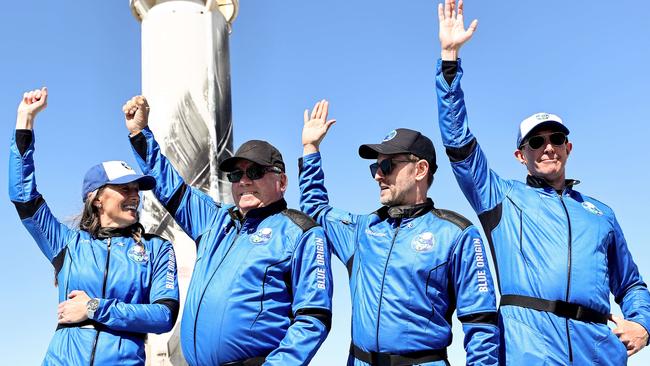
Entrepreneur, philanthropist. Born New York, June 29, 1972; died New Jersey, November 11, aged 49.
-
Glen de Vries wanted to do something, not be something. And he did so much, almost as if he felt his time could be cut short at any moment. Like every successful businessman he took risks, but only calculated ones over which he had significant control. With one exception: last month he was a paying passenger on Amazon founder Jeff Bezos’s Blue Origin flight into space.
On October 13, de Vries, 49, and his fellow astronauts flew at a top speed of 3597km/h as they reached 107km above the Earth – a 10-minute, 17-second adventure that added four names to the roll call of fewer than 600 humans – in total there have been 110 billion of us – who have seen Earth from space.
With him on this mission was Chris Boshuizen, an Australian based in San Francisco and these days a venture capitalist after a stint at NASA. More famously, there was Star Trek actor William Shatner (and if you get to fly into space with him, he is just “Bill”), who at 90 became the oldest person to leave Earth’s pull.
For a day, this trio and a Blue Origin executive were among the most famous people off the planet.
Until then few people had heard of de Vries outside the medical research community, although his obvious business successes were reported in The Wall Street Journal and The New York Times, even if the financially savvy journalists battled to grasp quite what it is that de Vries had developed.
At high school he was “obsessed” with physics and chemistry – and always space – and he achieved a university degree in biological sciences, while never quite sure where his focus might be. In the end he researched prostate cancer and the best forms of treatment for individual cases. Annoyed at having to ask for routine blood samples for these patients, he hit the books again and qualified as a phlebotomist to take urine and tissue samples himself.
This led to an interest in clinical trials, and the thought that these might be consolidated with those from other universities, broadening their scope and sample. This led to the development of software that would pull together clinical trials for any research. This evolved into building online systems to design and run clinical trials that would result in treatments and medicines more quickly to tackle illnesses. He called the company Medidata Solutions.
After being part of more than 25,000 clinical trials involving up to eight million patients Medidata was bought by French software company Dassault Systemes for almost $8bn. The French kept de Vries on as vice-chairman of life sciences and healthcare.
De Vries put his success down to his mother making him take ballroom dancing lessons. He could be an obsessive man and ballroom dancing became an obsession. “(It) teaches you to be confident, not arrogant,” he would say.
When Medidata launched in Japan about 15 years ago, de Vries spoke at the event, vowing to return the following year and deliver his address in Japanese, and reportedly did so, while insisting his Japanese was better in the bar than at a podium.
An uncle was an excellent guitarist, so an inspired de Vries learned the instrument and formed a band. He also learned to fly aircraft, was instrument rated, and would do his trips around the US in light planes.
It was no surprise to his family and friends when he signed up for the Blue Origin flight, the cost of which he never revealed, “but it was worth it”. These are the early days of commercial space flights and they involve profound risks and faith in very new technologies.
After the brief thrust beyond our planet’s reflected light, and seeing the dark nothingness beyond, the four latest astronauts faced each other and touched hands. “Everyone’s eyes were just filled with tears,” said de Vries. “We were together in the same moment of our lives, probably the most amazing moment any of us will ever experience.”
Just 29 days later he was dead. On Thursday last week he took off from Essex County airport in New Jersey bound for Sussex, 79km away. With him was his old flight instructor, Thomas Fischer, 54. The plane lost altitude and crashed into a forest 19km short of their destination.
De Vries had been a leader of an inventive US-based charity, Dancing Classrooms, which seeks to develop “poise, mutual respect and confidence” in children by participating in ballroom dancing. More than 650,000 children around the world have benefited from it.
Left unfinished at his apartment is a 2m high Lego model of the Blue Horizon rocket.




Glen de Vries